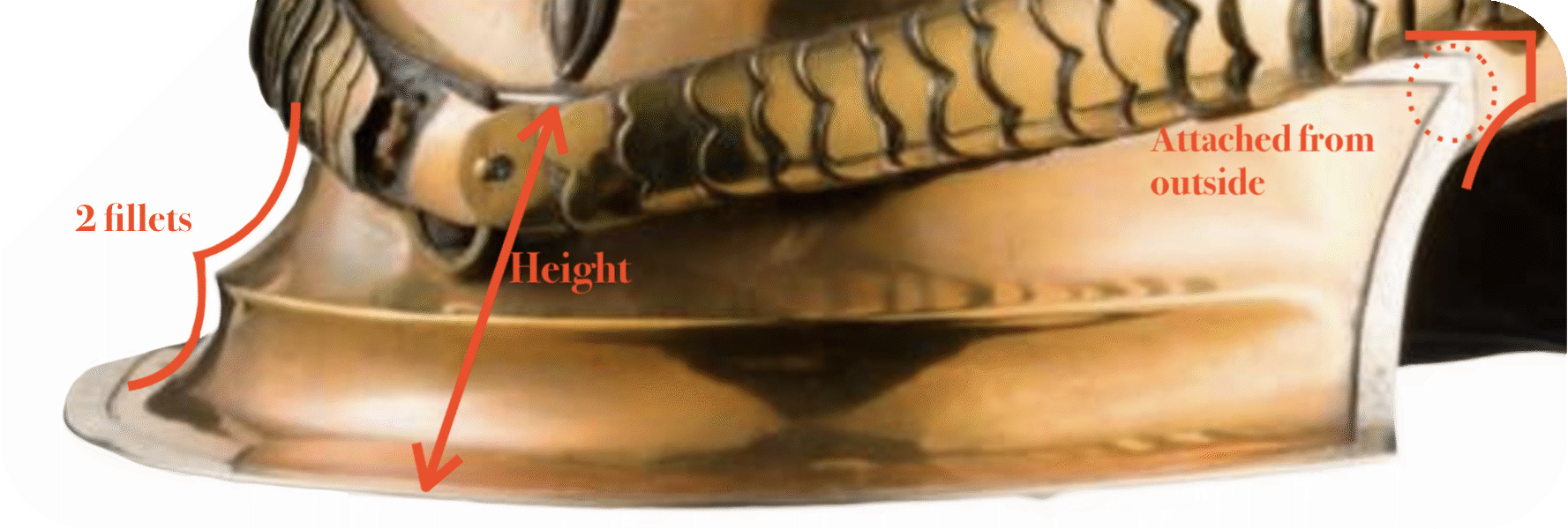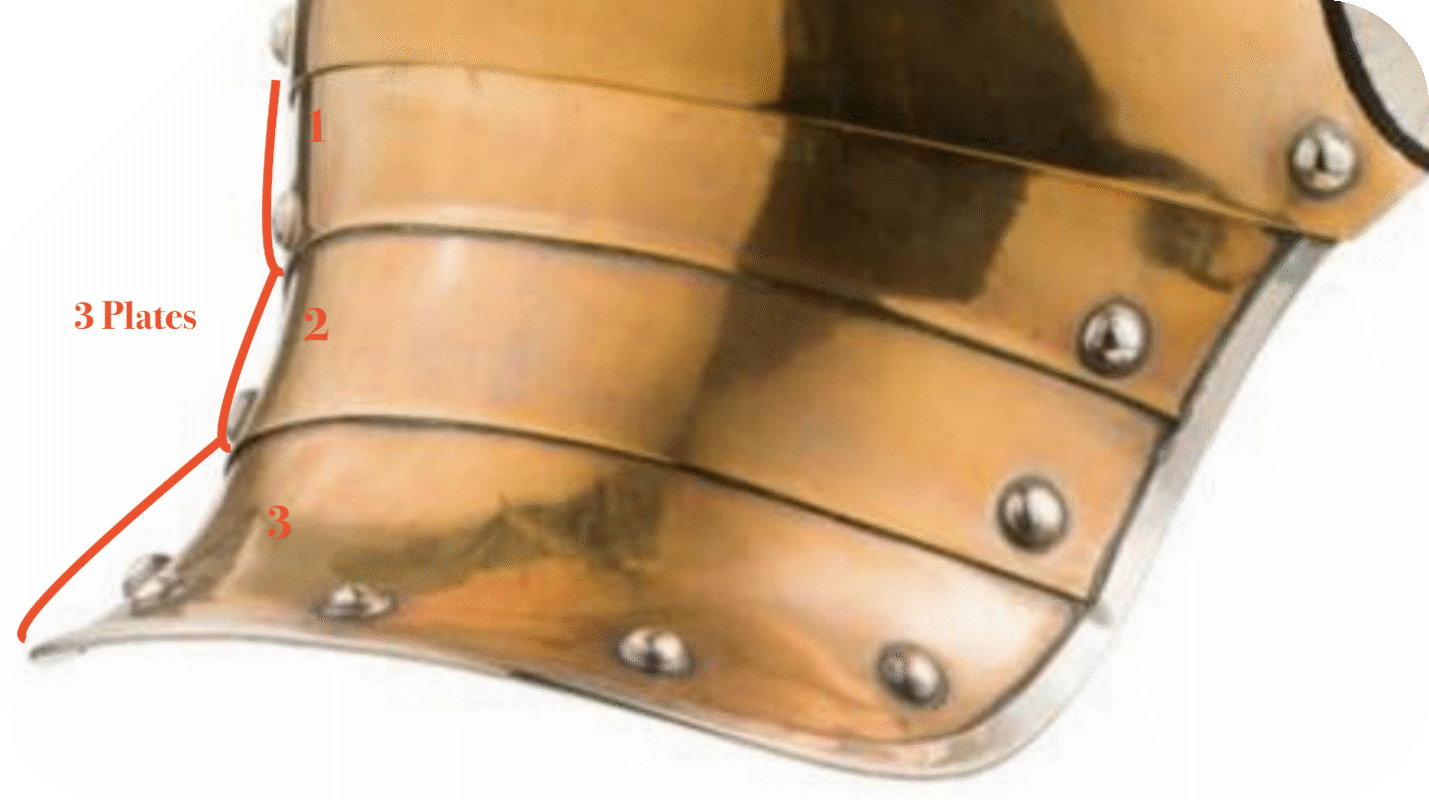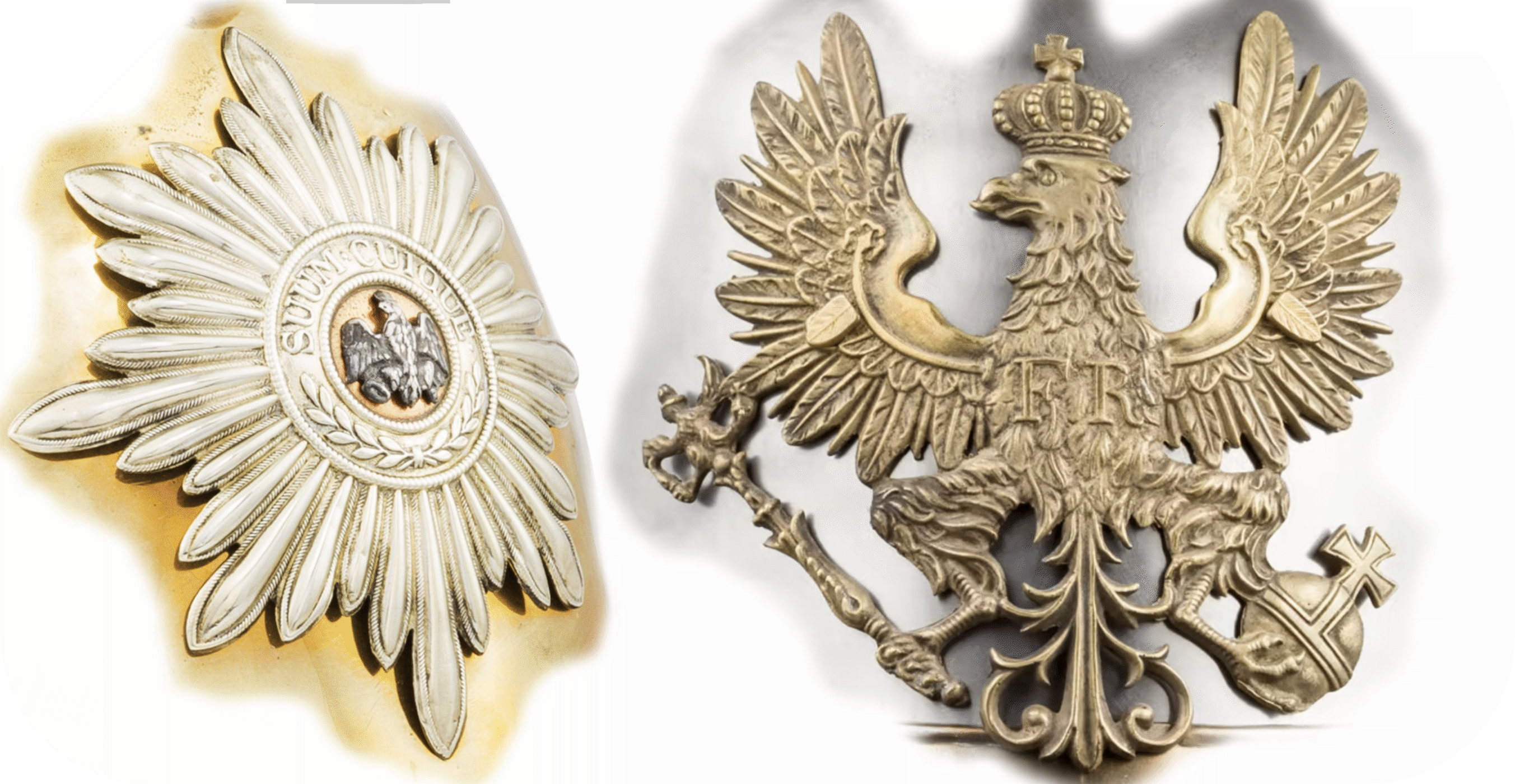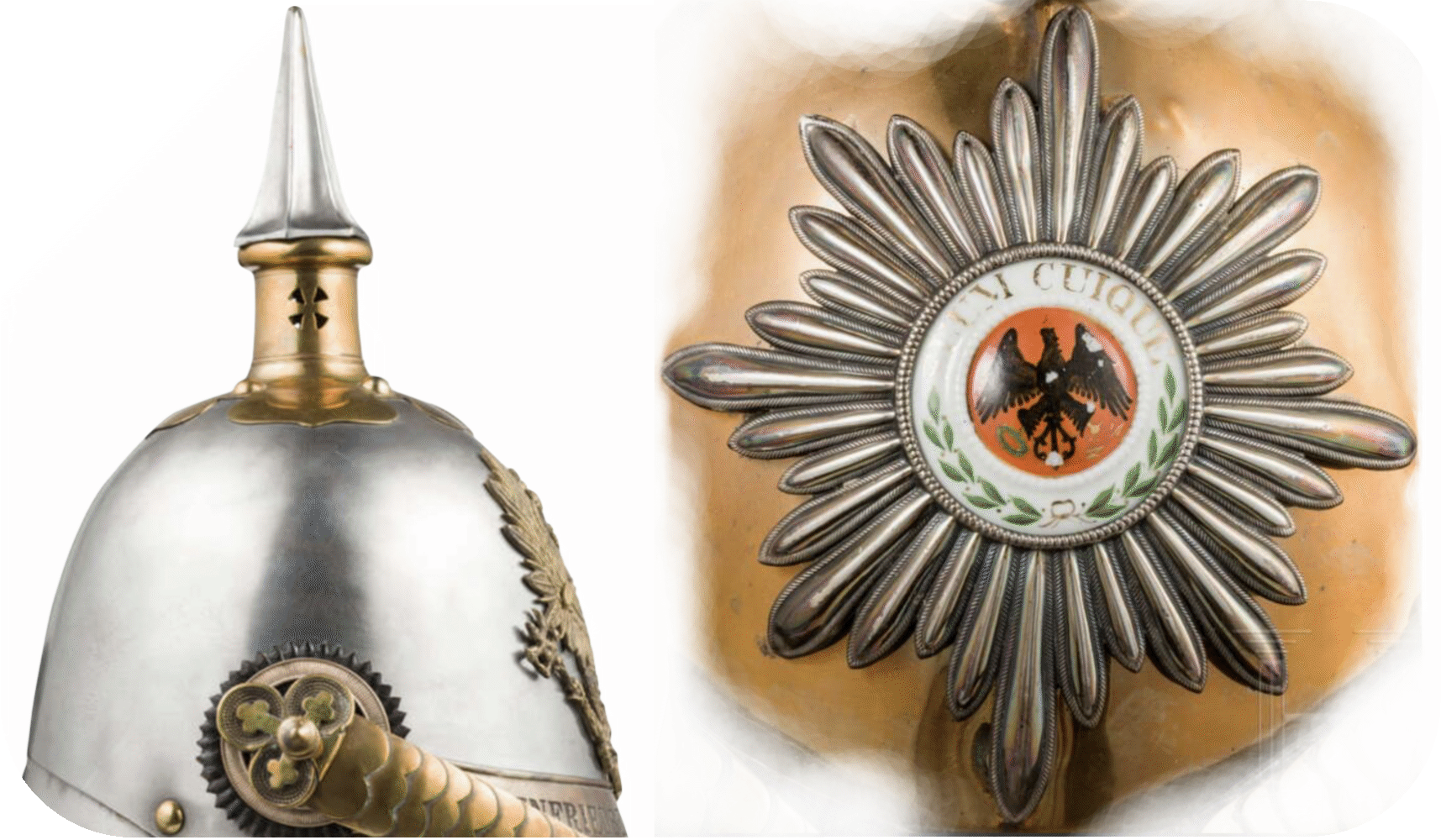The metal Pickelhaube M1843 (developments until 1852)
1843 - Cuirassiers
Since the cuirassiers were a very proud unit of the Prussians, the testing of the metal helmet, as it was called according to the official regulations, lasted a little longer than that of the leather helmet. It was just not wanted to risk any embarrassment. However, on 22.2.1843 the metal helmet M1843 was finally introduced, the tombac helmets still somewhat later on 5.4.1843.
Enlisted men:
- The helmet shell was made of a 0.8 mm thick steel sheet or 1.0 mm thick sheet of tombac in one piece, the production was done by deep drawing. The fabrication from one piece was a great progress, earlier helmets consisted of 2 parts and had to be soldered together time consuming. The shape of the helmet shell was slightly different depending on the manufacturer, there were hemispherical or parabolic helmet shells. Also the height varied slightly, the lowest helmet was 17.0 - 19.0 cm high, which corresponds to the approximate height of the leather shell of an M42. On the back of the helmet there was a vertically pressed rib. The length of which also varied and sometimes only ended in front behind the helmet's decoration.
- The squared front visor was 7.3 - 7.8 cm high and 21.0 - 23.3 cm wide. The inside was sealed with a green protective coating. The visor was riveted to the helmet shell and framed all around with two u-shaped metal trims to protect it from sharp edges, but also because it looked better (Fig. 1). In steel helmets, they were made of brass, in tombac helmets of nickel silver. The 1st trim was about 0.8 cm wide and it covered the sides and the lower edge of the front visor. It was fixed at the ends with small countersunk rivets. The 2nd trim was only 0.5 cm wide. It covered the upper edge and was fixed not only at the ends, but also in the center with a small countersunk rivet. After riveting, the front visor was flanged again to improve the fit on the helmet shell.
- The rear visor consisted of 3 sheets (Fig. 2). These were first assembled and the edges were then also framed with a metal trim. The inside of the visor remained unfinished, since it was later covered with black leather and the edges of the leather were to be covered with the metal trim. After completion, the rear visor was then riveted to the helmet shell from the inside. So that it remained somewhat movable it was fastened only at the two sides, to it. The mobility should, so it was believed at least, protect the rider in case of falls from the horse.
The star of the Order of the Black Eagle was worn as a helmet decoration on the front of the guards (Fig. 3 left). This was presumably specified with a size of 14.0 cm, as described in the clothing regulations of 1895, but it was measured somewhere between 13.0 - 14.0 cm. It was made of the same material as the visor trim. For the line cuirassiers, the helmet ornament consisted of an approximately 12.5 - 13.0 cm high eagle plate, as used for the leather helmet (Fig. 3 Right). To attach the decorations to the helmet, 2 threaded pins were soldered to the back, which were inserted through matching holes on the helmet shell and fixed with squared bow nuts. Sometimes, however, manufacturers deviated from these attachment methods. For example, on the eagle shown in Figure 3, screws for fastening were inserted through the eagle plate from the outside. The heads of the two screws were designed in great detail as feathers to make them look as invisible as possible. This again shows how much importance the people in charge at that time attached to appearance and quality.
- The spike was about 13.0 cm high in total and consisted of 2 parts (Fig. 4). The spikebase, which was made of nickel silver on tombac helmets, just like the visor trim, and the conical spike, which was made of tombac on tombac helmets. In the case of steel helmets, the spikebase and the visor trim were made of brass, but the conical spike was made of steel. The oval base of the spikebase pointed towards the ends, and had 2 ventilation holes in its neck. It was attached to the helmet with a set of 4 half-round head screws and squared bow nuts. For parades, the spike was replaced by the guards with a three-dimensional eagle with spread wings facing backwards that was about 14.0 cm high (+crown: 2.5 cm), 20.5 cm wide, and weighed about 150 g (Fig. 6).
- The chinscales were curved and made of tombac for the tombac helmets and brass for the steel helmets. The Prussian leather cockade, initially worn on the left, measured 7.0 - 7.5 cm in diameter.
- The liner was made of tongued leather and could be tightened with a leather strap, which allowed to adjust the fit to several head sizes.
- The weight of the helmet was on average 1225g.
Officers:
- The officer's helmet had the same shape, materials and dimensions as the enlisted helmet. But it was much more carefully crafted and the tombac or brass parts were fire-gilded, the nickel silver parts silver-plated.
- The rear visor was dressed with black velvet instead of the black leather.
- The base of the spikebase was formed out 4-times like a leaf and the holes for the half-round head set screws were generally placed between the leaves. However, some makers also placed them in the middle of the leaf. The 4 vents in the neck of the spikebase were in the shape of a cross and the spike was hexagonal rather than round (Fig 5 Left). The parade eagle of the officers corresponded in dimensions to that of the enlisted men, except that it was more finely chased and silver-plated (Fig. 6).
- The guard star, which also measured around 13.0 - 14.0 cm for the officers of the guard, was decorated with enamel in the center (Fig. 6). Like the eagle emblem‘s, the officers' decorations were silver- or gold-plated.
- The rosettes of the chinscales had the shape of a three-leaved clover (Fig. 5) and the edges of the chinscales were bent over in such a way that they appeared more solid. Due to their tradition, the chinscales of the officers of the „Leib“ cuirassier regiment No. 1 wore an unique design with raised edges, which they had already worn before.
- For officers, the lining was made of high quality „Juchten“ leather. In addition, the tongues were squared off at the top and there were more of them than in enlisted helmets (Fig. 6 Right).
1846
On 27.10.1846 the wearing of a woolen cockade was allowed by AKO, because the paint did not hold well on the leather cockade. The cockade diameter of 7.0 - 7.5 cm was retained. This regulation did not apply to officers, but they still often wore silk cockades in silver-black at that time.
1848-1851
In the period from 21.3.1848 to 14.3.1851 the German cockade was worn on the helmet because of the revolution. Since this was worn on the left side, the Prussian cockade changed to the right side. When the revolution failed and the German cockade was dropped, however, the Prussian cockade stayed on the right side of the metal helmet.





